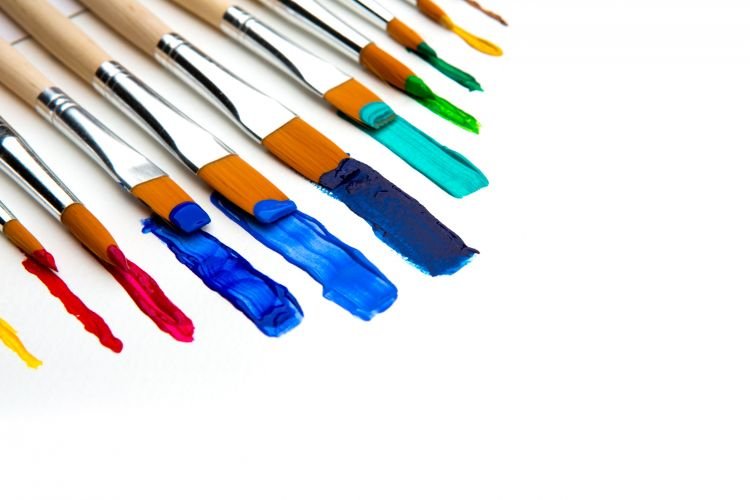Introduction
Sip and paint, an engaging and expressive form of art, has gained immense popularity in recent years. It combines the joys of painting with the pleasure of sipping your favorite beverage, making it a delightful experience for both beginners and seasoned artists. While the atmosphere, drinks, and canvas are essential components of sip and paint, there’s one tool that plays a pivotal role in bringing your artistic vision to life – brushes. In this blog post, we will explore the significance of brushes in sip and paint, including the different types, sizes, materials, techniques, and maintenance tips to enhance your painting journey.
The Different Types of Brushes
One of the first things you’ll notice when you step into a sip and paint session is the array of brushes available for use. Each brush type serves a specific purpose, allowing artists to create various textures, details, and effects on the canvas.
- Round Brushes: These brushes are versatile and commonly used for creating fine lines, intricate details, and precise strokes. They come in various sizes, from small to large, offering flexibility in your artistic expression.
- Flat Brushes: Flat brushes have a broad, rectangular shape, making them ideal for covering large areas of the canvas. They are perfect for background work, broad strokes, and creating clean, straight lines.
- Fan Brushes: Fan brushes have bristles that spread out like a fan, which makes them excellent for blending and creating soft, feathered effects. They are often used in creating natural textures like clouds and foliage.
- Detail Brushes: As the name suggests, detail brushes are designed for intricate work and fine detailing. They have a pointed tip, allowing artists to add precision to their paintings.

Brush Sizes and Their Impact
The size of a brush significantly influences the outcome of your sip and paint masterpiece. Brushes come in various sizes, and each size serves a distinct purpose. Smaller brushes are ideal for detailed work, while larger brushes cover more significant areas.
When selecting a brush size, consider the scale of your painting and the specific elements you want to emphasize. Smaller brushes work well for intricate details, while larger brushes are suitable for background and broader strokes. Experimenting with different brush sizes can help you achieve the desired effect in your artwork.
Brush Materials and Quality
Brushes come in different materials, with synthetic and natural bristles being the most common. Synthetic brushes are often more affordable and can work well for sip and paint sessions. They are also suitable for acrylic paints, which are commonly used in sip and paint due to their quick drying time.
On the other hand, natural bristle brushes are preferred by some artists for their ability to hold more paint and create smoother strokes. They are commonly used with oil paints. The choice between synthetic and natural brushes ultimately depends on your preference and the type of paint you are using.
Regardless of the material, investing in high-quality brushes is crucial. Quality brushes may have a higher upfront cost but often provide better performance and durability over time. Look for reputable manufacturers and read reviews to ensure you choose brushes that will serve you well on your artistic journey.
Techniques and Brush Strokes
The way you use your brushes can significantly impact the texture and appearance of your painting. Various techniques and brush strokes can be employed to achieve different effects:
- Blending: Blending involves mixing colors on the canvas to create smooth transitions and gradients. Soft, gentle brush strokes and a light touch are essential for effective blending.
- Layering: Layering involves building up colors and textures by applying multiple layers of paint. Brushes with different shapes and sizes can be used to create depth and dimension in your artwork.
- Texturing: To add texture to your painting, you can use brushes in unique ways, such as stippling (dabbing the brush repeatedly), scumbling (dry brushing with a light touch), or impasto (applying thick paint to create raised texture).
Experimenting with these techniques and brush strokes can add depth and dimension to your sip and paint creations, allowing you to express your creativity in various ways.
Brush Care and Maintenance
Proper care and maintenance of your brushes are essential for their longevity and continued effectiveness. Here are some tips for keeping your brushes in top condition:
- Clean your brushes promptly after each painting session. Use a gentle brush cleaner or mild soap and lukewarm water to remove paint residue.
- Avoid leaving brushes in water for extended periods, as it can damage the bristles.
- Gently reshape the bristles to their original form while they are still damp.
- Store your brushes with the bristles facing up or horizontally to prevent damage to the shape.
- Avoid using excessive force when painting, as it can cause bristle damage.
- Regularly inspect your brushes for any signs of wear or damage and replace them as needed.
By following these maintenance tips, you can ensure that your brushes remain in excellent condition, allowing you to create beautiful artwork for years to come.

Brushes and Personal Style
As you gain experience in sip and paint, you will develop your unique artistic style. Brushes play a crucial role in shaping your style, as they are the tools through which your creative ideas come to life. Some artists prefer certain brushes for their distinctive effects, while others enjoy experimenting with different brush types to push the boundaries of their creativity.
To find your personal style in sip and paint, it’s essential to explore various brushes and techniques. Don’t be afraid to step out of your comfort zone and try new things. Over time, you’ll discover the brushes that resonate with your artistic vision and help you create the artwork that reflects your unique perspective.
Conclusion
In sip and paint, brushes are more than just tools – they are instruments of creativity and self-expression. The choice of brushes, their sizes, materials, and techniques all contribute to the final masterpiece that emerges on your canvas. Whether you’re a beginner or an experienced artist, understanding the role of brushes and investing in quality tools can elevate your sip and paint experience and help you create art that brings joy and satisfaction.
So, the next time you attend a sip and paint session, take a moment to appreciate the humble brush in your hand. It’s your partner in creativity, ready to turn your ideas and inspirations into vibrant, colorful realities on the canvas. Happy painting!

